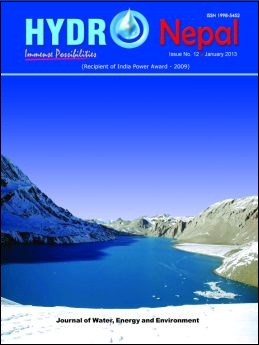Water Quality Assessment of Sukhna Lake of Chandigarh City of India
DOI:
https://doi.org/10.3126/hn.v12i0.9028Keywords:
Lake catchment characteristics, Market and non-market benefits, Shivalik hills, Water quality index, Water quality parameters, IndiaAbstract
The Sukhna Lake of Chandigarh City is a man-made lake situated in the foothills of the Shivalik range in the north-east corner of the city. This urban lake is one of the prime tourist places of the ‘City Beautiful’ and is mainly used for recreational purposes like boating, morning and evening strolls, exercises, food plaza and sightseeing. The catchment of the lake is mainly hilly and erosion prone, with the Sukhna wildlife sanctuary comprising a major portion of it. The water quality index of the lake water and its dependence on catchment characteristics has been studied. By using the National Sanitation Foundation Water Quality Index (NSFWQI) and Overall Index of Pollution (OIP), the results of the water quality assessment have found the lake water as having ‘good’ and ‘acceptable’ quality respectively based on past seven years’ data. During the last few years, construction activities in the catchment area have speeded up and a few invasive alien plant species have come up in the lake. Inflow of untreated domestic waste water from nearby villages in the catchment, particularly during the rainy season, seems to be the main reason for the weed problem in the lake. Strict enforcement of ban on new construction activities and preventing the release of untreated domestic waste water from the villages located in the catchment are the absolute necessary steps for maintaining and improving the lake water quality.
Hydro Nepal: Journal of Water, Energy and Environment
Vol. 12, 2013, January
Page: 26-31
DOI: http://dx.doi.org/10.3126/hn.v12i0.9028
Uploaded Date : 10/28/2013
Downloads
Downloads
Published
How to Cite
Issue
Section
License
The copyright of the articles and papers published is held by HYDRO Nepal Journal.
The views and interpretation in this journal are those of author(s), and HYDRO Nepal does not bear any responsibility for the views expressed by authors in the journal.




